7 flood-tolerant plants to protect your yard from heavy rain
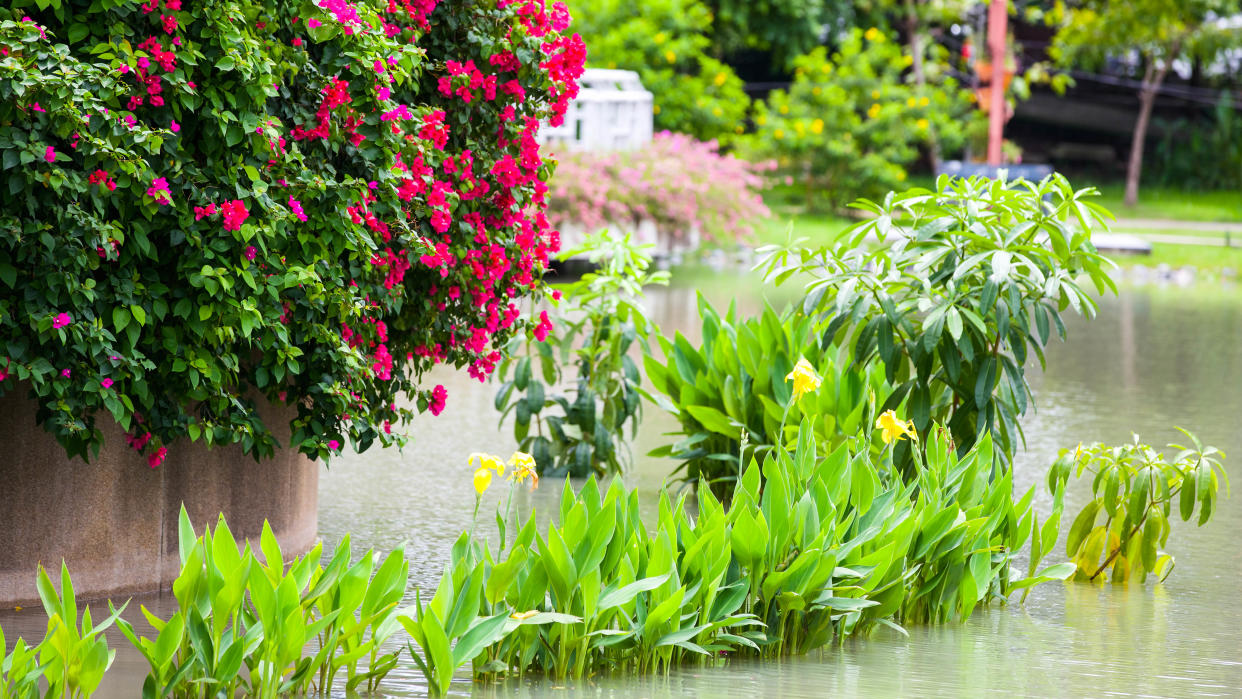
Whether you live in an area prone to flash floods or have shallow parts in your yard that easily collect rain, water can often cause havoc to your beautiful garden.
Not only can excess water damage your grass, resulting in a waterlogged lawn, but it can encourage the spread of algae, moss, dandelions and various soil diseases.
Luckily there are certain flood-tolerant plants that can soak up moisture and prevent runoff into other areas of your yard. Some native plants have evolved to cope with wet conditions, and can help to reduce the impacts of heavy rain, reducing overall risk to your green spaces. This makes them the ideal solutions for flooded yards or soil drainage issues. In addition, they can help with preventing soil erosion in your yard.
Bear in mind that such plants will be dependent on what zone you live in. So it’s always best to check they're suited to your USDA Hardiness zone before buying.
In the meantime, if you don’t want to deal with a flooded yard, it’s handy to know the common flood-tolerant plants that can protect your yard from heavy rain.
1. Hostas
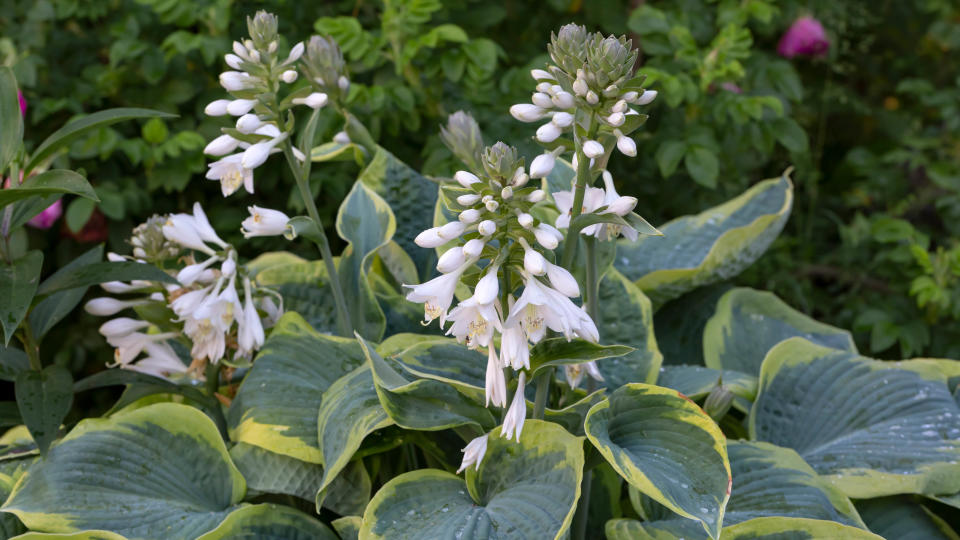
Hostas are extremely flood-tolerant, thriving in damp locations and moist soil. Also known as ‘plantain lily’, hostas have large, sculptural leaves ranging from cool blue hues to vibrant greens and yellows. In fact,some hostas can start from a tiny 4 inches to grow as large as 6 feet across! They also thrive in partial to full shade which also make a great shade-loving plant if you lack sunlight.
Hostas tend to grow best in USDA Hardiness Zones 3 to 8, with a few varieties suitable for Zone 9. It’s worth noting these perennial plants are a favorite of deer and rabbits, so you might want to consider this when placing them. In any case, Hosta plants can transform a lacklustre garden into a lush and beautiful outdoor space.
2. Virginia Willow
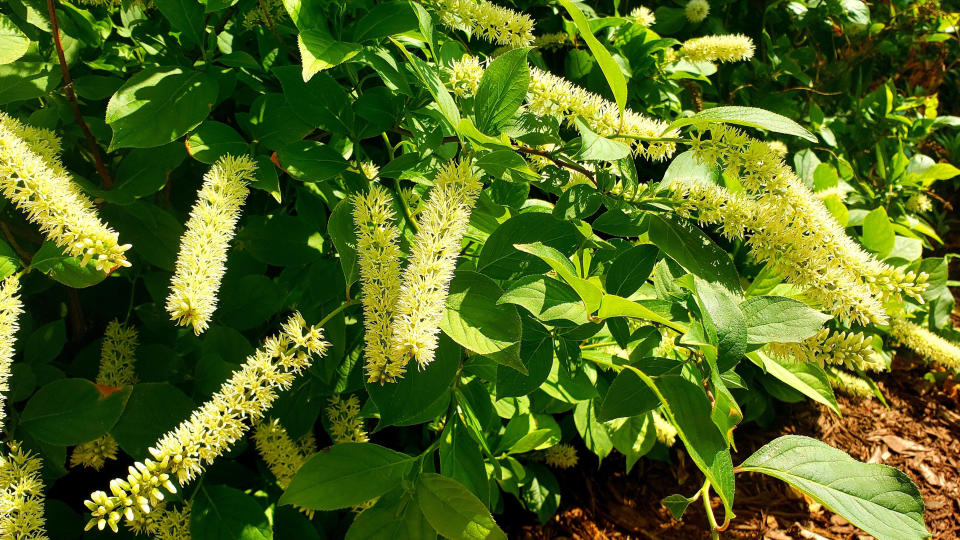
The Virginia Willow is a widely-spreading shrub, recognised for its spikes of attractive, white flowers that bloom from late winter into early summer. Such species are native to bogs, wet woodlands, lakes, and streams — making it the ideal shrub to tolerate flood-plain areas.
Incredibly adaptable, the Virginia Willow will grow in dry or wet soils in partial shade. However, you’ll get the best shape with at least four to six hours of sunlight. With its long spikes, it can grow up to 5 or 6 feet high, and 4 to 5 feet wide. The Virginia Willow can be found in most parts of the USA, but are less common in the southern states.
3. Winterberry
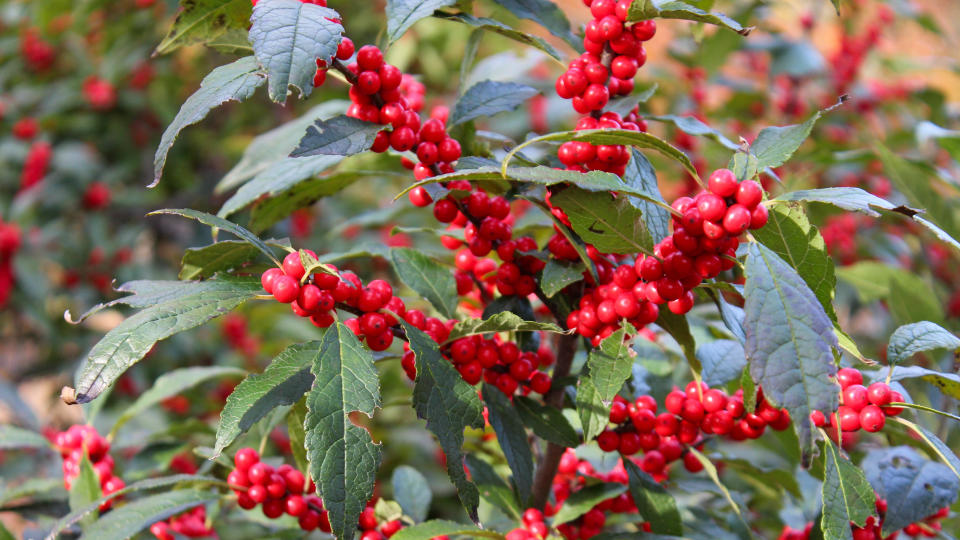
With its deep red berries, the Winterberry is tolerant for both flooding and drought — making it extremely versatile. The ‘Red Sprite’ variety in particular, is compact and ideal for rain gardens or flood-prone landscapes.
Typically, the Winterberry thrives in wet, acidic soil and grows best in marshland, swamps, ponds, and creeks/rivers. Additionally,iIt can also tolerate poor soil drainage and is very hardy during the harsh winter months. Native in most parts of North America and Eastern Canada, this hardy plant grows best in USDA zones 3 - 9.
Although the berries are a favorite of various bird species, these are also toxic to pets — so bear this in mind when planting.
4. Ligularia (Leopard Plant)
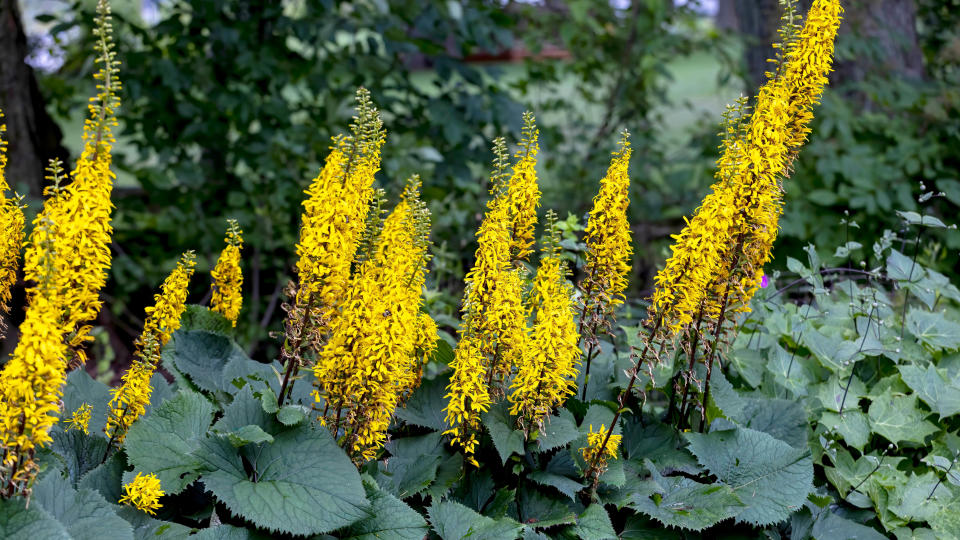
Also known as ‘The Rocket’ for its rocket-like flower spikes, this plant is also known for its flood-tolerant properties. Incredibly versatile, it thrives well in moist soil, partial shade and even full sunlight. Since this plant can grow in height of up to 6 feet tall, it also provides great wind cover and extra protection.
With its vibrant, orange-yellow flowers, the Ligularia will make a striking feature in those damp spots in your yard. And can work well when planted with other water-loving shade plants.
The Ligularia is usually low-maintenance shade perennials, best planted in poorly drained soil — and thrives in USDA hardiness zones 4 to 8.
5. Daylilies

This versatile species is known to be exceptionally tolerant to floods, droughts, and can even cope in a heatwave. With their colorful, rainbow of shades, Daylilies can grow in poorly-drained/sandy soils, and can tolerate partial or full sunlight. Their roots absorb and store water — making the ideal species to cope with consistent summer rain and manage landscape run-off. While its flower can be as little as 2 inches, it can range in height from about 2-3 feet tall, and spread up to 2 feet wide.
Daylilies mostly thrive in USDA hardiness zones 4-9, which can often be planted among groups of daffodils, tulips or other spring-flowering bulbs to add vibrant color to the yard.
6. Meadow Rue
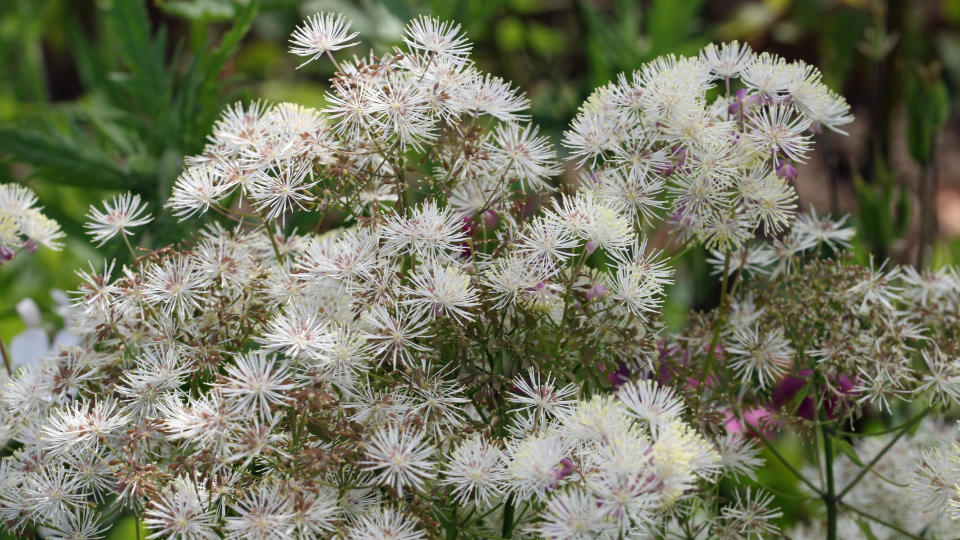
Meadow Rue is also known for preferring moist soil conditions. As the name suggests, this plant is native to meadows, swamps, riverbanks and woodlands.
Typically known for its fluffy clusters of yellow flowers, this plant reaches from 50 to 100 cm in height. While it mainly thrives in partial shade, it also loves full sunlight, and grows best in USDA hardiness zones of 4-7.
In addition, the Meadow Rue attracts butterflies and provides a good source of nectar for bees — which is great for your gardens.
7. Fingerleaf Rodgersia
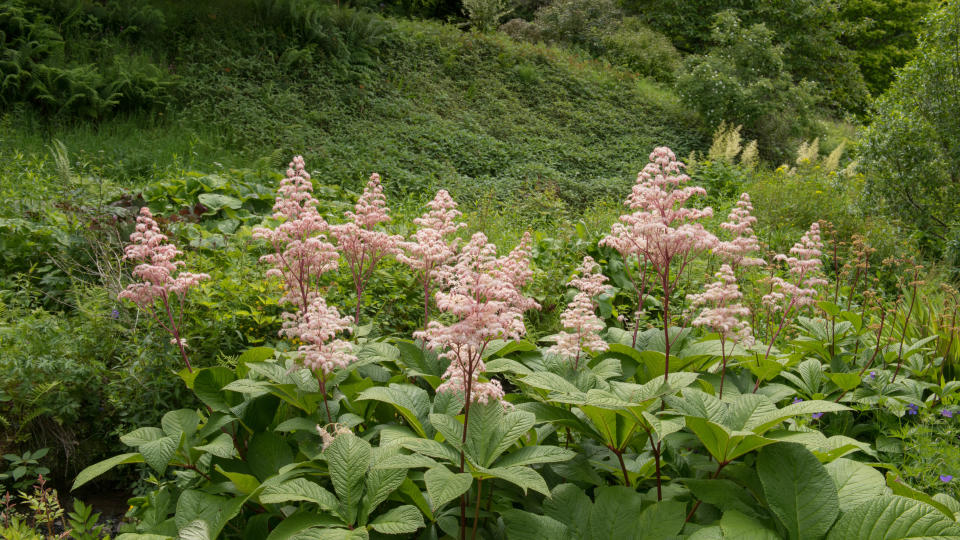
This is another option to grow in constantly wet areas of the yard or soggy conditions. It’s no surprise that you’ll tend to find these growing near swamps, ponds, lakes and damp woodland areas.
It usually tolerates most soil types, and prefers partial sun — with a USDA plant hardiness zone 3. With its beautiful foliage, and fluffy light pink or white flowers, the Fingerleaf Rodgersia can grow as tall as 6 feet, and as wide as 3 feet. After a few years, it will form a dense clump that will renew itself each year.
Bear in mind that the Rodgersia can often attract pests such as slugs and snails, which can cause damage to the plant.
Other tips to prevent flooding in your yard
Besides plants, there are other practical ways to prevent flood damage in your yard, and protect it from excess moisture.
Aerate the lawn — A common method to improve drainage is to know how to aerate your lawn properly. Aerating essentially involves puncturing the ground to allow better air circulation in the soil.
Build raised garden beds — By raising plants off the ground they won’t come into direct contact with excess water, and will offer more drainage to the soil.
Clear gutter and drains — Another common cause for a flood garden is blocked gutters or drains. Ensure these are clean, and free from a build-up of debris and dead leaves.
Invest in a water butt — Collecting rainwater in certain places in your yard will prevent excess water from pouring onto the grass.
Create your own drainage — Choose permeable pathways, patio surfaces and plant borders that easily allow water to soak in. Stepping stone slabs or bark will provide a solid dry pathway on a wet lawn.

